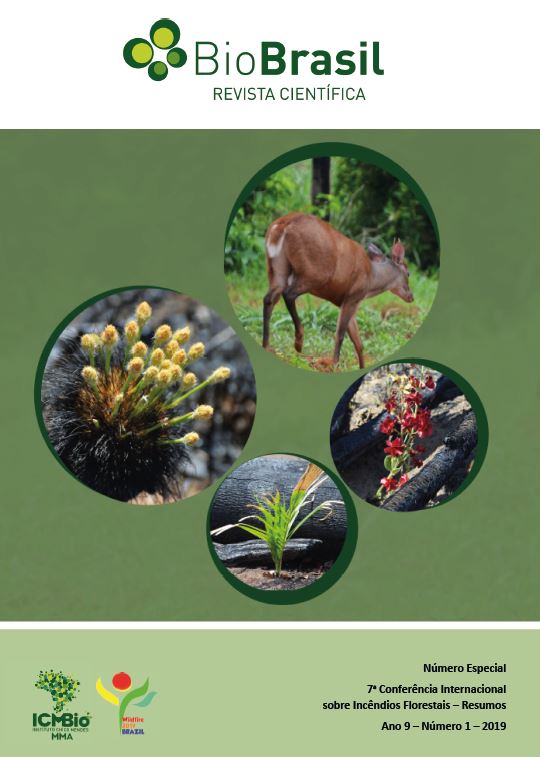Caring for Country and People in the Warddeken Indigenous Protected Area
DOI:
https://doi.org/10.37002/biodiversidadebrasileira.v9i1.1211Palabras clave:
Traditional knowledge, fire management, carbon markets, socio-economic benefits, northern AustraliaResumen
Settler colonial policy in the remote West Arnhem Land Plateau of northern Australia saw Indigenous people centralised initially for their protection and then assimilation. This led to the depopulation of vast areas and the interruption of customary fire management of Australian savannas by Indigenous people. Within the remote and highly inaccessible West Arnhem Land Plateau this resulted in a colonial fire regime dominated by frequent, large and intense wildfire events. This fire regime has been a key driver of species loss, habitat degradation and has impacted the cultural and customary economic values of the region. The advent of both the Indigenous Ranger movement during the 1990's and the ongoing return to depopulated regions by Indigenous peoples through the outstation movement provided an opportunity for the Nawarddeken people of the West Arnhem Land Plateau to initiate innovative programs to care for and manage their ancestral estates whilst supporting livelihoods in the absence of contemporary economic opportunities. At the heart of this has been the establishment of a new industry that mobilises customary fire management alongside western science and technology in such a manner that a tradable carbon commodity is produced. Whilst economics remain a key driver for success, the delivery of this new postcolonial industry must also take into account the cultural, social and environmental drivers and impacts of this activity. This presentation will describe in detail how the Nawarddeken people have utilised best practice contemporary governance and conservation planning techniques to capture and express their vision for their estates. In particular we will focus on how this management approach incorporates and value adds to their deliberate use and management of fire as a primary management tool. Furthermore, we will discuss the challenges and successes of establishing a robust monitoring regime that effectively captures a range of environmental, social and cultural indicators to report upon and guide the evolving management of the West Arnhem Land Plateau.
Descargas
Descargas
Publicado
Número
Sección
Licencia
Derechos de autor 2021 Biodiversidade Brasileira - BioBrasil

Esta obra está bajo una licencia internacional Creative Commons Atribución-NoComercial-SinDerivadas 4.0.
Os artigos estão licenciados sob uma licença Creative Commons Atribuição-NãoComercial-SemDerivações 4.0 Internacional (CC BY-NC-ND 4.0). O acesso é livre e gratuito para download e leitura, ou seja, é permitido copiar e redistribuir o material em qualquer mídia ou formato.











